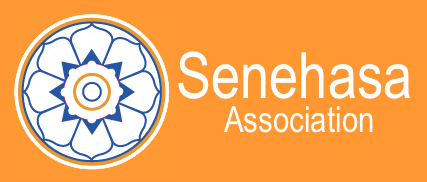Fourth reservoir and new village school now completed
The Piyasaragama Wewa (tank) in the the Maha Oya division in the Ampara District in South East Sri Lanka is now complete and has filled to spill level during the North East monsoon. It costs around £20,000 and will support 110 poor families by brining 20 acres of paddy into cultivation. Much of the area is under light jungle now with a little chena cultivation and paddy. The land is fertile and so once irrigation is available, the farmers will be able to earn a much better income from the land.
A wev sabhawe (village committee) was set up to manage the tank.
The water table in the area has risen and consequently the vegetation has returned to the area and is thriving. The tank has been stocked with fish, which provide an additional source of food for the villagers who live in this arid area. The World Bank has built 30 houses for families who wished to move into this area now that there is water.
Senehasa has also completed the extra classrooms nearby, at Nuwaragalatenna Maha Vidyalaya, replacing a mud building with a reed roof. The school currently has 750 students and goes up to O’level with a small A’level class. This will help the children to gain an edcuation and improve their employment prospects
A third reservoir was also completed in the Ampara district in SE Sri Lanka. Located in extremely poor areas, the reservoirs provide essential irrigation for crops.The recent monsoon rain will help the tank to fill and will then be available to irrigate fields in the dry summer months.
Fifth Reservoir completed in Ampara
In December 2012, Senehasa completed the restoration of the bund and sluice gate of a tank (or reservoir) which was part of the ancient irrigation system supporting the local agriculture in the Ampara District of Sri Lanka. This was the fifth project of its type that Senehasa has successfully funded. Rajagalatenna Weva filled with water during the monsoon season. It is changing the landscape and making the land around it productive again.





